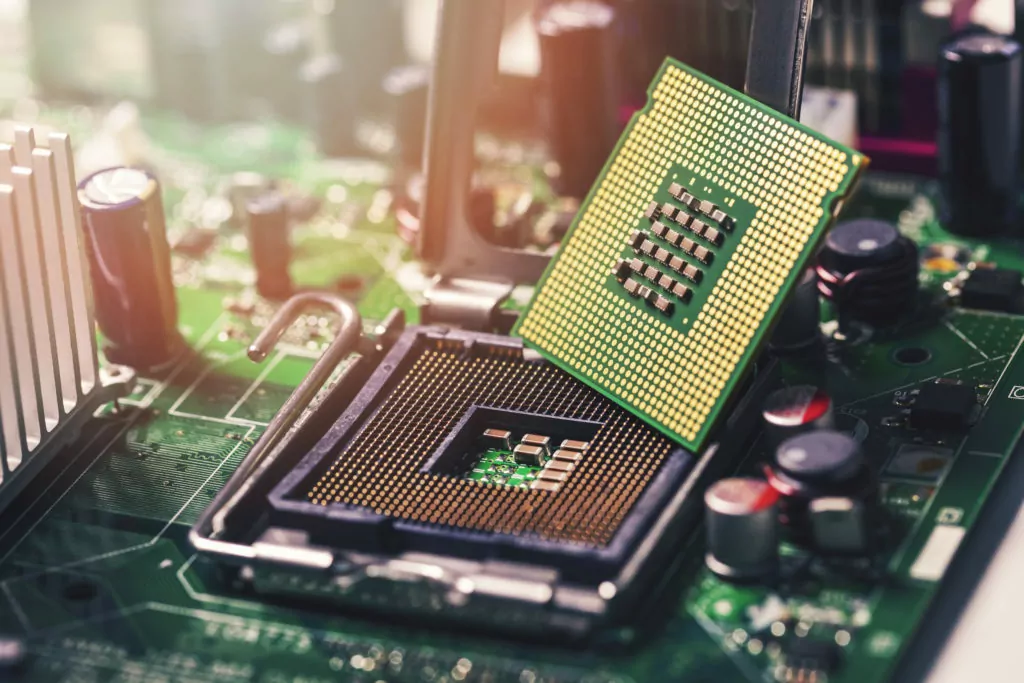Here are the body, mind, and soul of a computer.
Do you think there is such a thing as a computer mind?
Here’s the scoop.
Let’s get started!

The Body, Mind, and Soul of a Computer
A computer is very much like a human body, and different parts can be compared quite easily.
Several referrals to the body and a computer are similar in the components that perform and control various tasks, and it can be laid out in a language that doesn’t need to be decoded.
Just as the human body comprises cells that make tissues that make organs that work as a system, they apply to a computer.
A computer is based on circuitry cells, working together to store, send, and receive information to and from other computers in much the same way.
So when comparing a computer system to a human body, what exactly is the body, mind, and soul of a computer?
The Body of the Computer
For argument’s sake, you can take this with a grain of salt, but the computer as a whole is akin to the human body.
Not one part of the human body can do everything on its own; there are signals from the brain to neurotransmitters that tell the muscles to move the joints, to think, to see; to do everything that a human does.
The brain is a pretty powerful thing, arguably the most important part of a human, but without the muscles, the heart and lungs, kidneys, and all the other organs and innards, the brain would just be chilling on its own, with nothing to see but the four walls around it.
What makes the body’s components so great is the body itself; the vessel that encapsulates all of the pieces in one place; the body. Without the bones and skin, the body would really be globes of dodgy organs and puddling goo.
A computer’s body would be equally jumbled up if it didn’t have its hard outer casing and the computer screen to keep all things encapsulated.
And let’s not forget that you would see a lot of nothing if it wasn’t for the computer monitor.
How Does a Computer Monitor Work?
A computer monitor (or screen) is the visual output device attached to the computer tower.

Through it, you see pictures and images in real-time, which allows you to interact effectively with the computer or with others through it.
There are two main types of computer monitors, each with pros and cons. For example, a CRT monitor is cheaper, less space between colors, and more enduring.
The LCD monitor is much lighter and more compact, will be easier on your power bill, and most often has a higher resolution.
Laptop
A laptop is another form of body for the computer to live in, with the added benefit of being portable.
In this newer, leaner body, the computer uses much less power than its counterpart the desktop model, and is smaller, requiring less energy to run. Since a laptop has a battery, you won’t need to worry about losing any information during a power outage, as the battery kicks in upon the power going out.
The hard drive, memory, and battery usually are the only components that can be upgraded with a laptop, so the other components are built-in, therefore, cannot be removed.
An upgrade that is needed in anything other than the memory, hard drive, and battery will commonly require a new laptop.
Cellular Phone
While a desktop computer or laptop is more powerful, smartphones have made it easy to incorporate office work and other technical tasks nearly everywhere we go.
Cell phones count as the body of a computer, wrapped up in a very convenient package.
The big difference with cell phones is that they don’t have keyboards or touchpads. Instead, the whole screen is sensitive to touch.
Your cell phone is better in a way because you can do all of the same things with less bulk.
A smartphone is considered a computer in that any device that allows input from a user, interprets that information and provides output, is a computer.
What is the Mind of the Computer?
One could argue that the mind of the computer is the CPU (Central Processing Unit), RAM (Random-Access Memory), and hard drive.
The human mind contains all of the information you take daily, makes decisions (conscious), wanders, letting things float around (subconscious), and comes out in bizarre dreams.
Our mind (or memory) is comparable to a computer in that information is stored for great lengths of time but in different ways. It’s safe to say that the computer has the advantage of retaining useful data and not garbling it in translation.
The thoughts and vague recollections of the human mind translate well to the computer CPU, RAM, and hard drive; here’s how:
Central Processing Unit
A central processing unit, or CPU, is in nearly all devices, whether a cell phone or computer, or a smartwatch. They have the task of processing and completing instructions, like your brain sends signals to your muscles to work.

The CPU is the core of a computing device; a chip that is located in the circuit mainboard inside a device. It is not the memory or graphics card, it is a computer chip that is built by putting billions of microscopic transistors onto the one chip.
The transistors are so that the chip can make calculations in order to run programs that are stored in the system’s memory.
The CPU relies on the concept of interpreting binary signals (1’s and 0’s), and reading the instructions to create videos or spreadsheet data.
The transistors are becoming smaller and smaller as technology advances, but it doesn’t necessarily mean your computer will be any faster.
What Does a CPU Really do?
In basic terms, a CPU interprets calculations for an application or program. This is broken down by the CPU fetching the instruction from the RAM, and decoding the instruction, then executing the instructions using pertinent parts of the CPU.
The completed instruction might involve arithmetic which compares numbers by putting them together or moving them around in the memory. Those tasks are what a CPU does, since everything a computing device does is represented by numbers; everything from a Windows program to a video online.
RAM (Random Access Memory)
RAM, otherwise known as random access memory (we’ll call this conscious thought), holds the files and instructions until they are forgotten. This lets the computer multitask like the brain’s conscious thought lets you do the same.
More RAM means your computer (even the handheld smartphone type) can multitask quicker, and the computer will perform faster, much like your brain on a strong cup of coffee.
RAM is necessary for all devices, from game consoles to phones, because without it, everything would run at a snail’s pace, if at all.
You may notice that when a computer is running slow or a video game isn’t uploading quickly, or maybe a webpage is shown as loading for way too long; this all means that you need more RAM for things to run more smoothly.
So what exactly is RAM?
It’s like a shot of espresso, or more technically, a high-speed component for your computer that stores information temporarily that a device needs for that moment.
When you access RAM data, it is much faster than through a hard drive, which tends to run like a broker on decaffeinated coffee; a lot slower.
The Hard Drive
The hard drive (let’s call this subconscious thought) stores all of our data and files long term, and separates it into various tasks, just like the mind saves long term memories and can recall specific pieces from our past.
The hard drive doesn’t only save data and files. However, it saves every code required to run the operating system, the framework that the browsers use to access the internet, drivers for extras, and every other thing.
Whenever you want to retrieve a piece of information, no matter how long it’s been since you last retrieved it, it will be there waiting for you on the hard drive.
The difference between human memory and computer memory is that the computer is far more reliable.
Each hard drive only has so much space, some of which is automatically taken up by the operating system and the backup installations.
The rest can be used to download whatever your heart desires, whether it’s photos, movies, or anything else you want to keep on your computer.
Today, even though a hard drive can fill up, it’s not always necessary to worry when running out of space.
The “cloud” or cloud-based software does not need local storage.
Your hard drive can be kept free of many downloads by storing data in the cloud.
What is the Soul of the Computer?
This is definitely up for debate, but at the essence of everything, relationships, tasks, and life itself is a soul, a person who is behind it all.
A person drives them, creates their meaning for existing, why they do what they do—their soul. By this logic, you could say that the soul of a computer is the programmer.

The same can be said about a computer; its soul drives them; what moves them forward?
A computer would be nothing without the ciphers programmed into it and the codes put into the games and applications that enable it to run.
A computer would be lonely without the network of friends that connects it from one computer to another, which is all accomplished by a person.
You could argue that the programmer’s experience and time put into the computer would be a heap of wires and metal, with a bit of glass tossed in, sitting like a wasteful lump, if it were not for the casing in which the wires and memory were contained.
The monitor’s metal or plastic holds in the computer’s essence, while the screen is the window into the soul.
What is a Programmer?
A computer programmer makes up the code for operating systems and software applications.
Once the software developer creates a catalog, the programmer works on a code that turns that idea into a set of directions, and a computer can then follow.
The programmer will then run the application and test it to see if there are any mistakes and work to make it free of errors before running it.
The programmer’s obligation is to continue to evaluate the programs, modernizing them, and making improvements as needed.
There is no inner workings or knowledge of a computer, as there would be no internet or artificial intelligence without the know-how of the person who programmed it in the first place.

